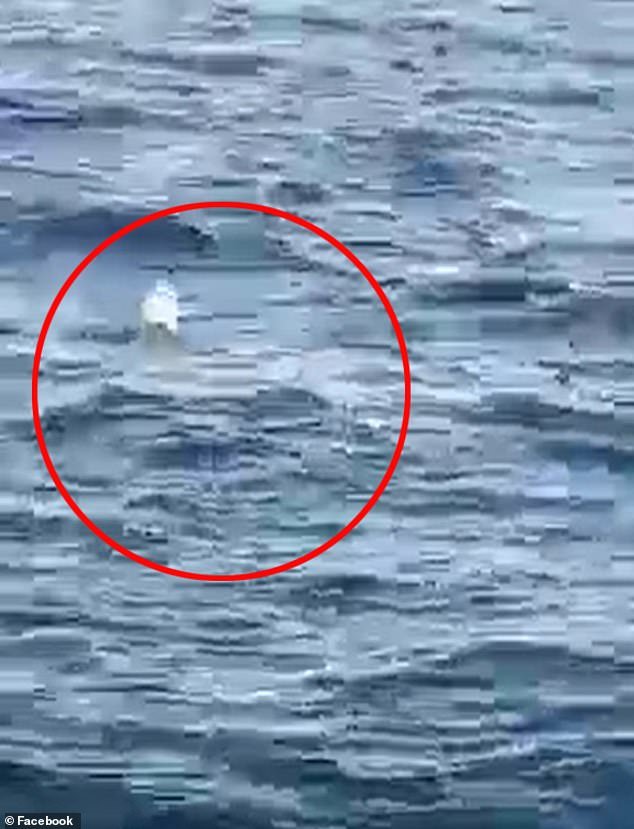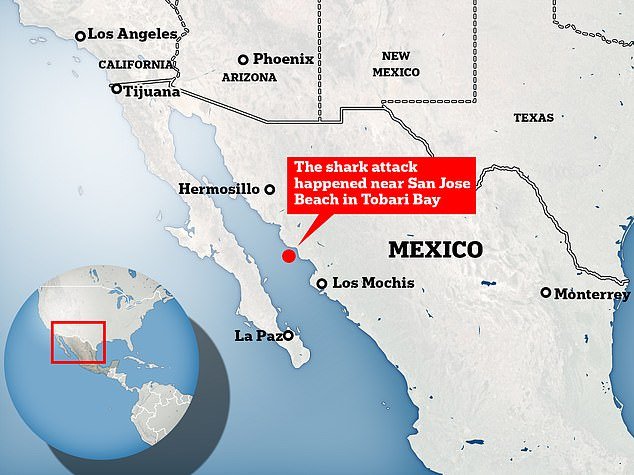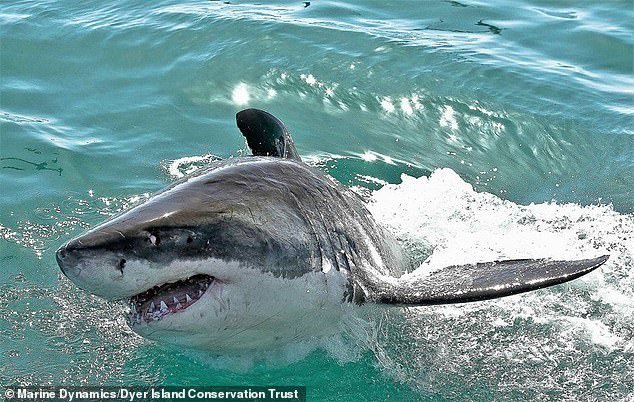Diver is decapitated by huge 19ft Great White shark in front of horrified fishermen
>
PICTURED: Man decapitated by a 19-foot great white shark in front of horrified fishermen as he plunged off a Mexican beach to catch prized shellfish, despite shark sightings nearby
- SUBWAYAnuel Lopez was diving in search of shellfish when he was attacked by a shark
- Lopez, in her 50s, had her head torn off in a gruesome shark attack.
- I was diving for shellfish, which are in high demand in the area.
A diver was decapitated by a great white shark in front of a horrified fisherman off the coast of Mexico in the first deadly shark attack of the year.
Manuel López was diving for shellfish near San José Beach in Tobari Bay on the west coast of Mexico when the 19-foot-long shark attacked him on January 5.
López, in his 50s, had his head torn off by a shark in the horrific attack in Paredón Colorado, Sonora.
The shark also bit both shoulders of the fisherman.
“He was diving when the animal attacked him, ripping off his head and biting both shoulders,” said fisherman José Bernal, who witnessed the attack. Tracking Sharks.
Manuel López was killed by a shark while fishing for shellfish off the coast of western Mexico on January 5.

Fishermen sighted a shark off the coast of Paredón Colorado, a coastal city in western Mexico, last Saturday, two weeks after Manuel López was attacked and killed by a shark while fishing for shellfish.
Lopez had been diving without an air tank to a depth of about 59 feet to collect hatchet tripe, a mollusk that is like a scallop, from the ocean floor when the predator attacked him.
Bernal said some sharks had been seen in the area in the days leading up to the attack and the fishing crew had been on high alert.
“Local divers had been warned about the presence of sharks in the area and most had not been out for several days,” Bernal said.
Many fishermen had been stranded due to great white shark sightings.
But the shortage of seafood in the area has created a great demand and López, with his financial future at stake, decided to immerse himself in what would be his last trip.
It was the second deadly incident since February 12, 2022 when Víctor Estrella, 56, was fishing for scallops and was attacked by a shark in the waters of the Pacific Ocean off the coast of the Sonoran town of Yavaros.
Great white sharks can grow up to 20 feet long and weigh up to 2 tons and have up to 300 razor-sharp saw teeth arranged in rows in their giant jaws.

Lopez, in his 50s, had his head torn off by the shark in the gruesome attack

Manuel López was diving for shellfish near San José Beach in Tobari Bay on the west coast of Mexico when the 19-foot-long shark attacked him in January. Image: Stock image of a great white shark
The predator when attacking can swim up to 35 mph guided by an extremely powerful sense of smell, but typically preys on seals, sea lions, dolphins, and turtles.
Humans are often mistaken for seals, especially when wearing wetsuits, and experts say the attacks are not intentional but ‘experimental’ when they bite.
They usually walk away after biting once when they realize the human is not their natural prey, but the damage caused by a single powerful bite is often fatal.
“Great white sharks are most prevalent in the Gulf of California during December and January, when pregnant females enter the area,” Tracking Sharks said.
“Sharks often seek out fat sea lions to feed on due to their high caloric content.”
